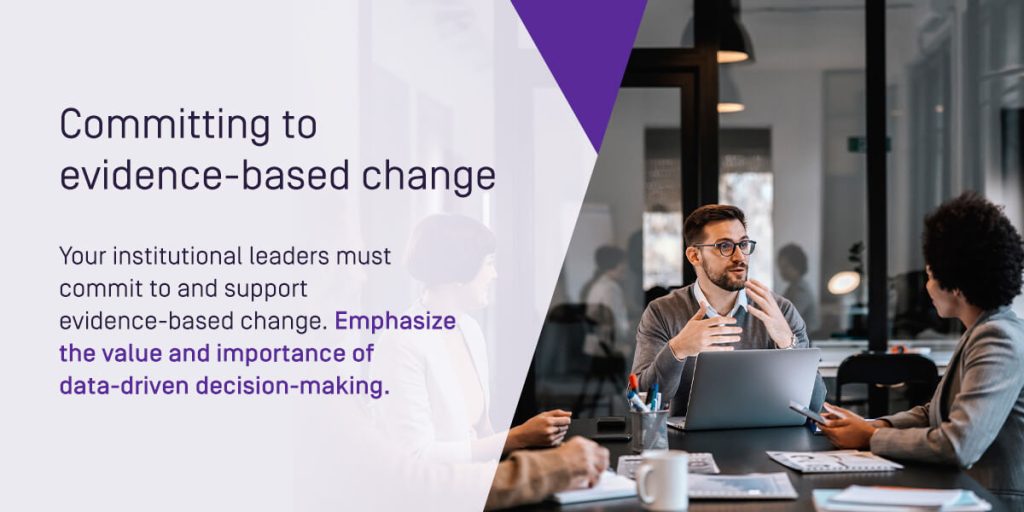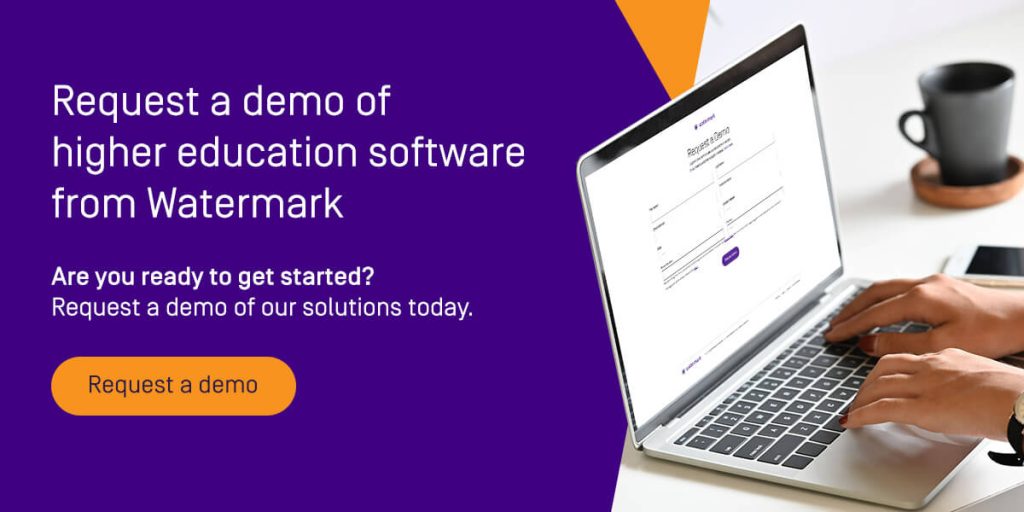



Assessment is an integral aspect of creating an institution that is continuously improving and evolving to enhance educational experiences at every level.
Collecting and analyzing assessment data can help your college or university reach its goals more quickly and make informed decisions to shape a positive future for your students and faculty. Understanding how to assess and apply your data is essential for creating the most beneficial change.
We are breaking down some key challenges to effectively utilizing your institution’s assessment results. We’re also exploring simple but impactful ways to overcome these barriers.
Assessments are a key part of higher education, helping colleges and universities gauge how well students grasp course materials and how prepared they are for their future careers. However, maximizing the benefits of your assessment results and using them to create positive change can be a challenge.
Explore some of the common barriers higher education institutions may face when using assessment results and helpful ways to overcome them:
A common hurdle many institutions face is understanding what satisfactory results are and are not. Setting the bar too high can be discouraging for students and faculty members. Setting the bar too low can lead to misleading academic outcomes.
Colleges or universities determining their assessment goals should aim to set objectives that are challenging but achievable for students and staff. Your institution needs a clear sense of satisfactory results and what it takes to reach them.
To ensure your college or university is making the most of its assessment results, set thoughtful benchmarks to provide greater insights into the areas that could use improvement.
Once an institution gathers its assessment results, it is common to experience problems sharing that data in a meaningful and easy-to-understand manner. Key decision-makers and stakeholders need to be able to gauge student performance and easily understand whether or not they are meeting the standard.
Your higher education institution can streamline how you share your results by choosing automated tools that efficiently collect, analyze, and make sense of your data. These solutions are more accurate than manual data processing and provide timely insights you can share immediately.
Another barrier to using assessment results is establishing the importance and value of continuous improvement. Your institution won’t be able to reap the benefits of your data without fostering a culture of ongoing change and evolution.
For instance, you should use your assessment results to evaluate two factors:
The drive to refine and improve your institution’s processes must be present at every level, from your administrators to teaching assistants. Motivating your staff and involving them in decision-making can help create systemic and lasting change for your college or university.
Everybody across your campus may have different ideas about improving and refining your institution’s operations. Managing conflicting thoughts and resistance to changing familiar processes can slow your college or university’s overall progress. That’s why having data as evidence is key to demonstrating what aspects of your institution to prioritize and update.

Your institutional leaders must commit to and support evidence-based change. Emphasize the value and importance of data-driven decision-making for making effective and timely changes to benefit your students and faculty the most.
A massive challenge for colleges and universities looking to utilize their assessment results is finding the time to adequately analyze and make sense of their data.
Your faculty or staff is busy instructing classes, supporting students, performing research, and balancing other on-campus responsibilities. Being strapped for time can hinder your findings and cause oversight.
Instead, your higher education institution can create clear timelines and support for those analyzing your data. Allow them to set aside time to focus solely on the results and invest in tools that make data analysis more efficient.
Insufficient resources are a major barrier to utilizing assessment results. If your institution does not have the financial means, technologies, or available personnel to identify areas of improvement and implement updates, you may not be able to effectively apply your data for positive change.
Your institution can combat this challenge by allocating resources specifically to data collection and analysis. Communicate the importance of having these insights with your college or university’s key decision-makers. Ensure they understand the importance of assessment results for creating more effective and beneficial learning experiences.
Another common challenge for higher education institutions is having personnel on campus with the technical expertise and data literacy to fully understand what your assessment results mean.
Educating your faculty and staff on data literacy and best practices can help your college or university use its assessment results to maximize improvement. The more your staff understands about applying data, the more positive, evidence-backed changes you can implement across your institution.
Colleges and universities can experience challenges when communicating assessment findings with key stakeholders. Your data needs to be accessible and presented in a clear, meaningful manner.
If your stakeholders cannot comprehend your insights or see the evidence for themselves, your institution risks not having the resources and support to implement new changes.
To combat this problem, your institutions must engage your stakeholders and encourage participation in ongoing conversations about your assessments, your improvement efforts, and the importance of making updates to benefit your college or university as a whole.
Data quality is often a barrier for higher education institutions looking to utilize their assessment results.
Your assessment data needs to be accurate, valid, and reliable. If you are working with incomplete, biased, or error-ridden insights, your institution won’t be able to implement the most effective and helpful updates to improve your academic programs and processes.
To fight this common barrier, your college or university can invest in software solutions that automate data collection and analysis. These tools will provide better data quality than antiquated and manual data processing.
Higher education institutions looking to harness the power of assessment data can turn to Watermark for support.
With Watermark Outcomes Assessment Projects, colleges and universities can tackle everything from running rubric-based assessment projects to evaluating learning outcomes. Our solutions will help your institution quickly identify opportunities for improvement to inspire continuous advancement.
Our Watermark Planning & Self-Study solutions can help you reimagine your assessment goals and streamline the process of gathering, evaluating, and acting on your data.
Are you ready to get started? Request a demo of Watermark solutions today.






























































































































































































































































































































































































